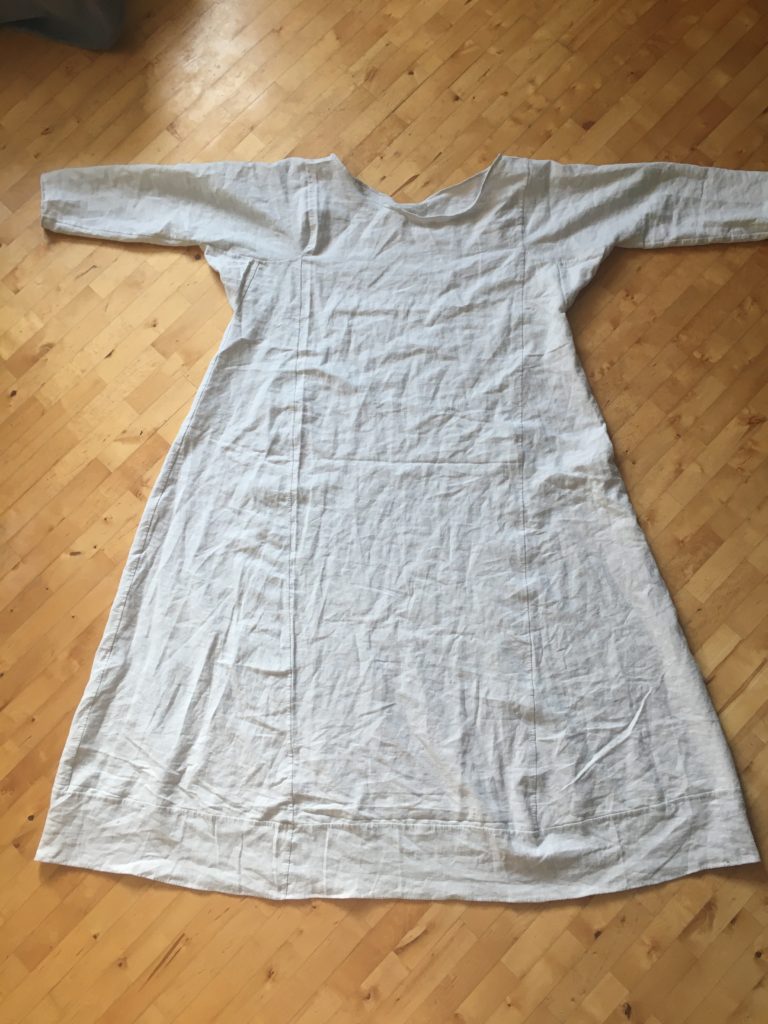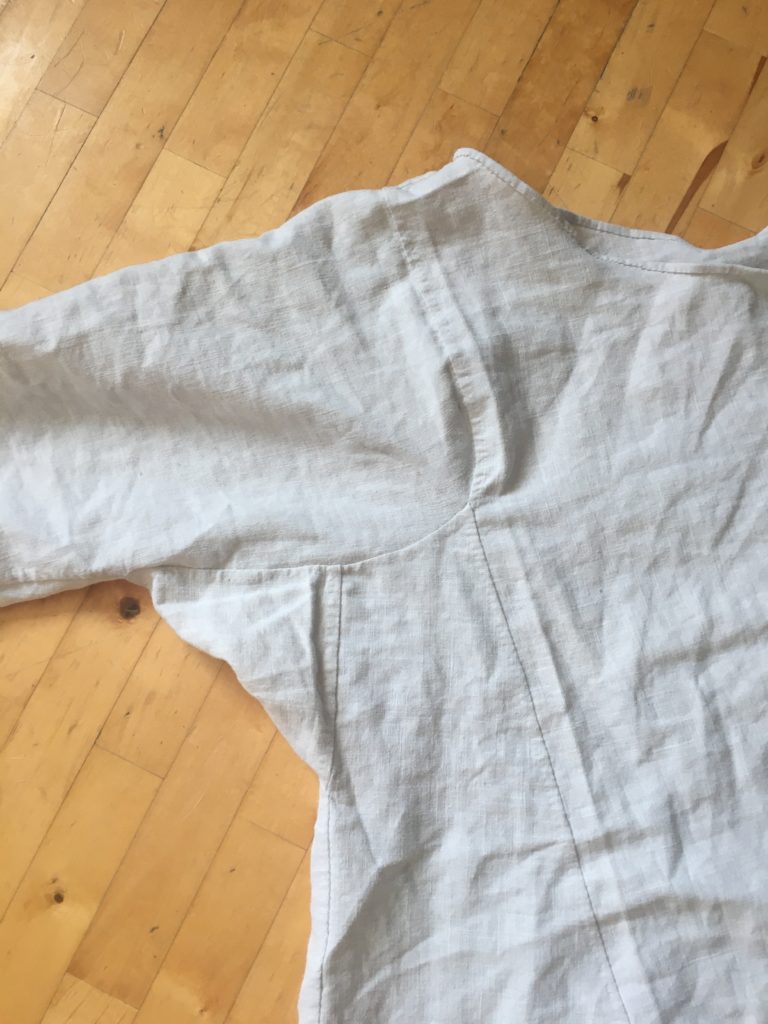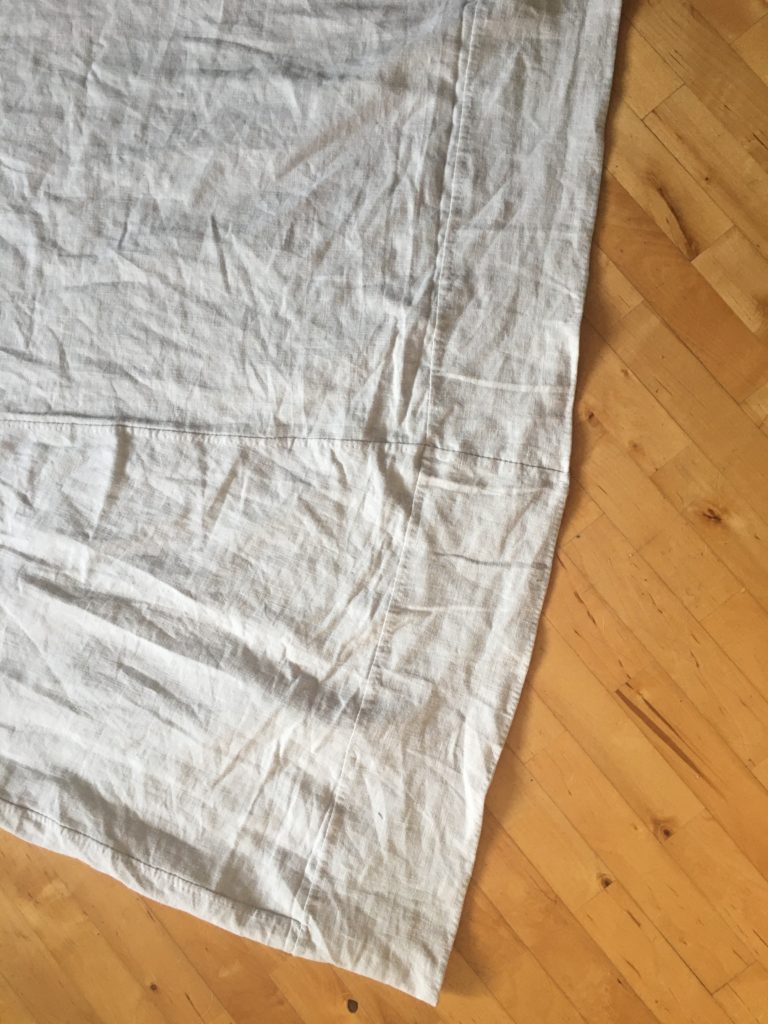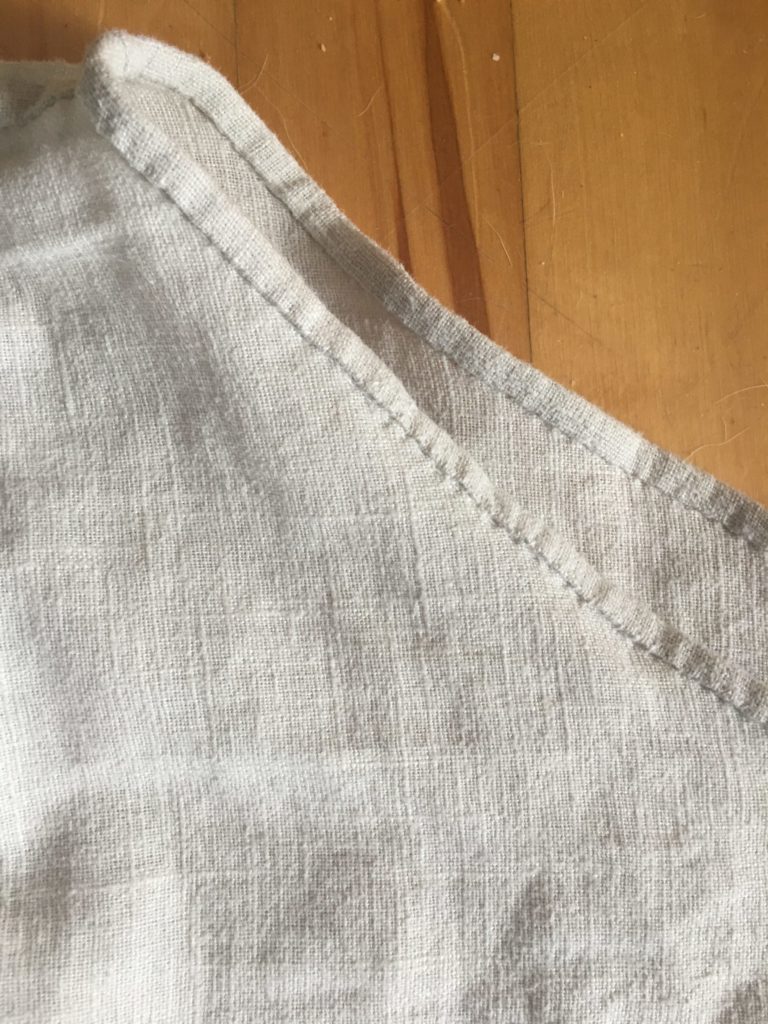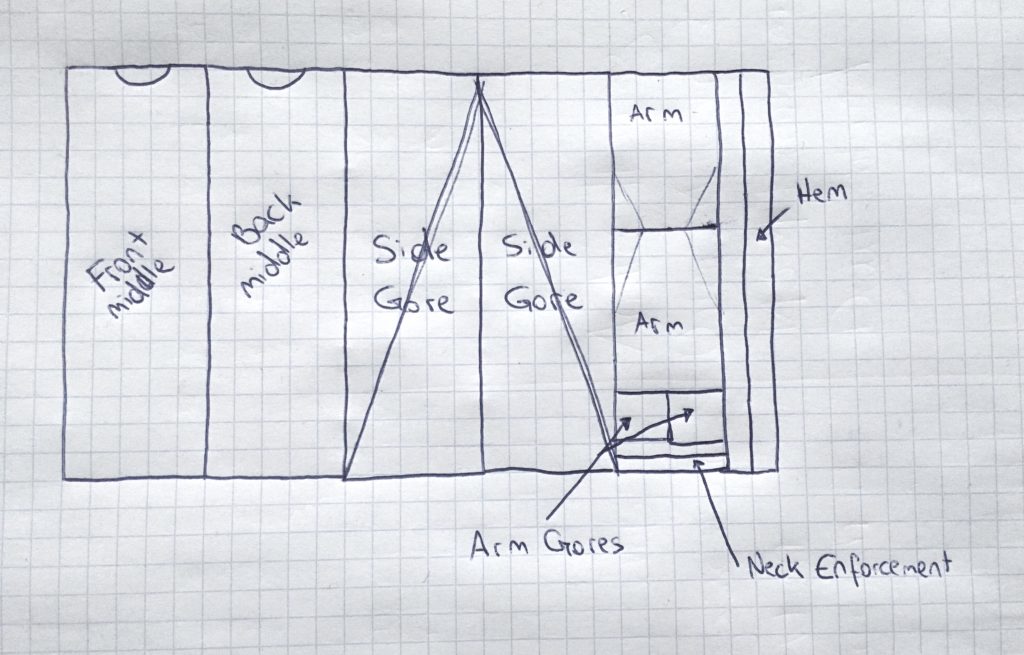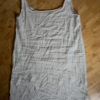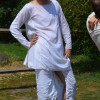A simple woman’s smock
Shortly on the wording: For the main undergarment in medieval times, there is a multitude of words in use. Chemise, Smock, Pfait, Hemd, Hemed, Wat etc. I will switch between Smock and Underdress here, in Austria, the best word to use would be ‘Pfoad’.
Since my old smock that I had for about 8 years, had been getting quite worn, the seams hat been tearing and the hem was already an ugly brown from all the mud it encountered over the years, at some point, and washing did not help against the discoloration any more, I had taken it apart completely and made a supportive underdress from it. I did unfortunately not write an article about it, but if you are interested in the construction you can see a bit more about those underdresses here.
So I only had two sleevless underdresses for the last two years or so which is nice for hot summer days, but a long-sleeved underdress has its merrits, it keeps you from sweating too much and makes for more warmth in winter.
So I had to have a new sleeved underdress.
Shortly on the evidence:
Unfortunately there are not a lot of extant examples of this very basic garment. Original depictions of the full garment are also rare.
Here you can find a bit of material on 14th century underdresses.
The material is simple linnen, sewn with linnen thread with felled seams since undergarments are often subject to a lot of wear and tear and need the extra strength in the seams.
The pattern is a very simple tunic pattern with the arm seams under the arms and small arm pit gores. We see this type of basic simple undergarment far into early modern times. Undergarments need to be loose and comfortable, even if the woolen outer garments are tailored to follow the body forms, because if both are tailored to the body, the unflexible linnen will restrict movement further.
I admit, the side gores are a little uneven, but that is not at all visible when wearing the dress, so I dont really care too much about this.
One particularity here is the separate Hem Stripe, which I mostly made because it was an easier use of my fabric. We also see a lot of depictions from 14th and 15th century, where women raise their hems and you can see an underdress with a different or attatched hem underneath, sometimes in white, sometimes even in coloured fabrics. It may be something people did especially after a time of wearing the underdress, when the hem gets damaged and discoloured, it is easier to just exchange it. And so my underdress already looks used.
I also made the neckline very wide, something that is not ideal for me, but my kyrtle has a very wide neckline as well and I dont want the underdress to show. Today I would prefer my necklines to be closer fitting. I also enforced it with a strip of linnen as can be seen on the shirt of St Louis from the 13th century. I noticed that the neckline tends to rip a lot, even if finished with a rolling seam, especially when sleeping in it in cold winter nights, so this was very important to me this time.
I made another pattern scheme for you on a 150 cm fabric to show you how you can easily construct the pattern directly onto your fabric. Every tile is 10 cm, so the measurements are suited to my voluminous body, for smaller people, smaller side gores and sleeves will probably be enough.
Related Posts
The following posts might interest you as well:




